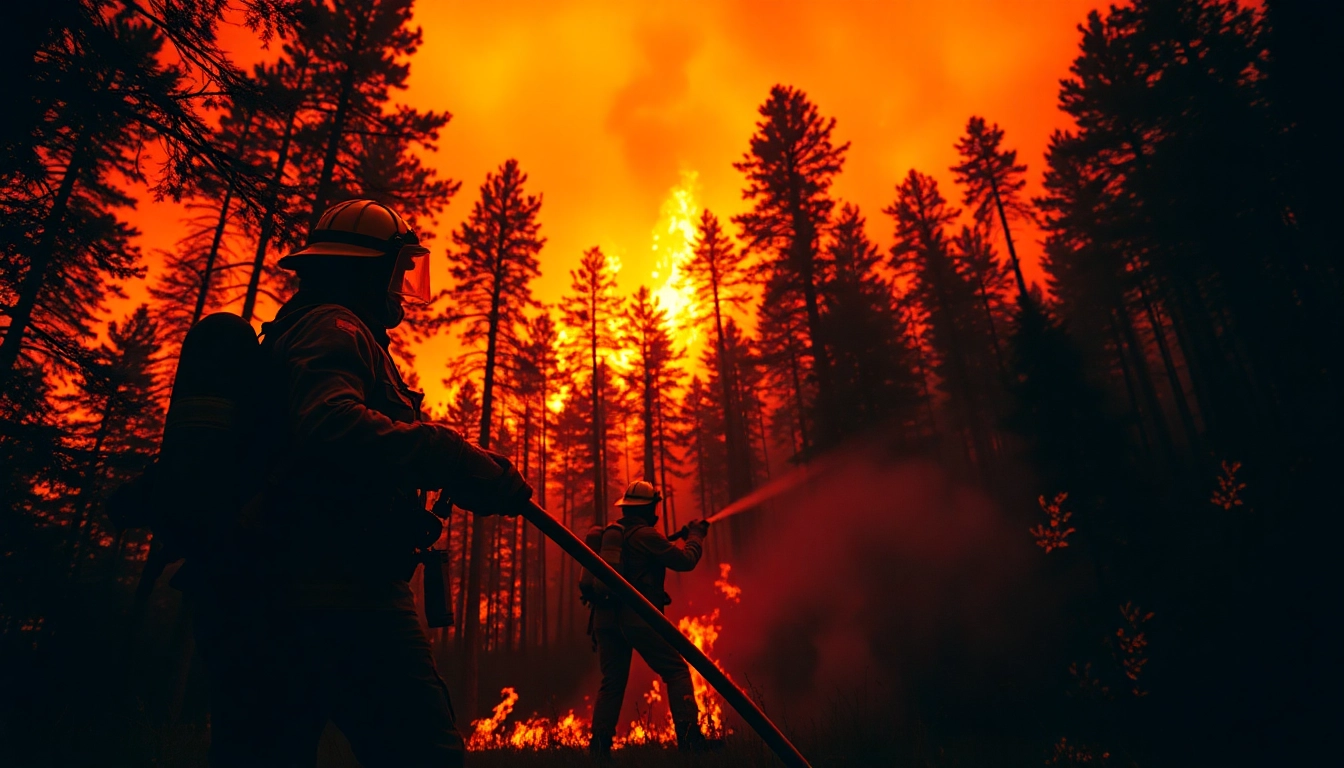What Are Wildfire Events?
Definition and Overview
Wildfires, often referred to as bushfires, grassfires, or forest fires, are uncontrolled fires that burn in natural areas such as forests, grasslands, and brush. They can vary in size, causing moderate to extensive damage to ecosystems, property, and human life. Wildfire events are typically categorized by their intensity, spread, and the environment in which they occur. Understanding these events is crucial for effective management and mitigation strategies.
Types of Wildfire Events
There are several distinct types of wildfire events, categorized primarily by their origin and intensity:
- Ground Fires: These fires burn the organic matter in the soil, often smoldering rather than burning with a flame. They can be particularly challenging to extinguish.
- Surface Fires: These typically burn the grass, shrubs, and underbrush on the forest floor and are the most common type of wildfire.
- Crown Fires: These fires move through the tops of trees and can spread rapidly, often fueled by strong winds.
- Spot Fires: These occur when embers from a main fire are carried by the wind, igniting new fires in locations away from the main blaze.
Global Trends and Statistics
Wildfire events have become increasingly frequent and severe across the globe due to a combination of natural and anthropogenic factors. According to various studies and reports, the incidence of wildfires has escalated significantly, with large fires burning millions of acres annually. Wildfire events are now a critical aspect of environmental studies, climate change impact assessments, and emergency management planning. The interplay between climate conditions, human activities, and vegetation management is vital in understanding these trends.
Causes of Wildfire Events
Natural Causes
Wildfire events can begin through natural causes without human intervention. These include lightning strikes, volcanic eruptions, and spontaneous combustion of dry vegetation. Lightning is one of the most common natural causes, especially in areas prone to dry thunderstorms.
Human Activity and Its Role
Human activity plays a significant role in igniting wildfires, often accounting for the majority of occurrences. Common scenarios include:
- Campfires: Unattended or improperly extinguished campfires can easily ignite surrounding vegetation.
- Discarded Cigarettes: Cigarettes tossed carelessly can smolder for hours before igniting brush.
- Agricultural Burning: Farmers may burn fields to clear land, and if conditions are dry, these fires can escape control.
Climate Change Connection
Climate change exacerbates the frequency and intensity of wildfire events. Rising temperatures, prolonged droughts, and changing precipitation patterns create ideal conditions for wildfires. Scientific studies indicate that as global temperatures rise, the duration of fire seasons is lengthening, increasing the risks associated with wildfires worldwide.
Impacts of Wildfire Events
Environmental Consequences
Wildfires can have profound and lasting effects on ecosystems. They can destroy habitats, alter landscapes, and affect biodiversity. While fire is a natural part of many ecosystems, allowing certain plants and trees to thrive, excessive or uncontrolled wildfires disrupt the balance, leading to negative consequences for wildlife.
Economic Costs and Losses
The economic impacts of wildfires are significant. The costs associated with firefighting efforts, damage repair, and loss of property can run into billions of dollars. For instance, the U.S. has seen escalating costs related to wildfire management, with states allocating increasing resources to combat the frequent and intense fires.
Health Risks and Community Effects
Wildfires pose serious health risks to communities, including respiratory issues due to smoke inhalation, as well as psychological impacts associated with evacuation and disruption. Communities affected by wildfires often face long recovery processes, which can strain local economies and healthcare systems.
Wildfire Events Management Techniques
Prevention Strategies
Implementing effective wildfire management techniques is crucial for reducing both the frequency and impact of wildfires. Prevention strategies include:
- Controlled Burns: Conducting prescribed or controlled burns can reduce fuel buildup in forested areas.
- Education Programs: Educating the public on responsible fire practices and fire risks is essential for minimizing human-caused ignitions.
- Land Management: Proper land management practices, including vegetation thinning and creating defensible space around properties, can prevent the spread of fires.
Response and Recovery Plans
Effective response to wildfire events involves having a well-coordinated action plan that includes emergency response teams, available resources, and communication strategies. Recovery plans should address rehabilitation of affected areas, support for displaced residents, and ecological restoration.
Community Preparedness Initiatives
Communities play a vital role in preparedness initiatives for wildfire events. Regular drills, collaboration with local fire services, and having emergency kits prepared are critical for ensuring community resilience. Local governments can facilitate workshops and educational programs focusing on safety and preparedness.
Future of Wildfire Events
Innovations in Firefighting
The future of wildfire management may see significant advancements in technology, such as the use of drones for surveillance and rapid assessment of fire situations. Satellite imagery can enhance monitoring capabilities, while artificial intelligence may assist in resource allocation and prediction of fire spread.
Policy and Regulation Advances
Policy advancements play a crucial role in wildfire prevention and management. Governments are increasingly recognizing the need for updated regulations concerning land use planning and forest management practices. Collaborative efforts between local, state, and federal authorities can improve coordination and resource distribution during wildfire events.
Public Awareness and Education
Public awareness campaigns focusing on the impacts and risks associated with wildfire events are essential. By enhancing understanding of wildfire behavior and the importance of forest management, communities can become proactive in preventing wildfires and supporting recovery efforts when fires do occur.
